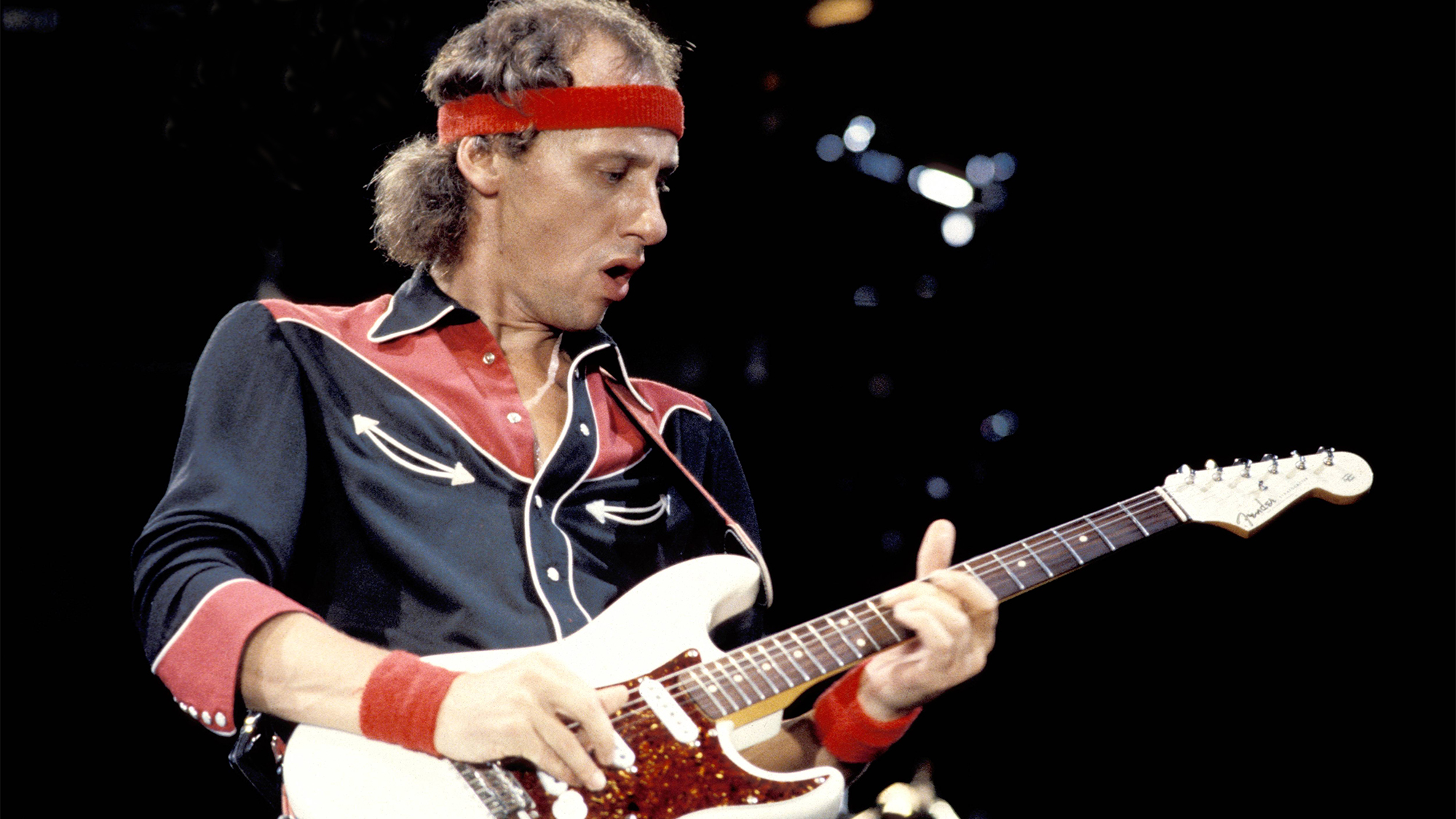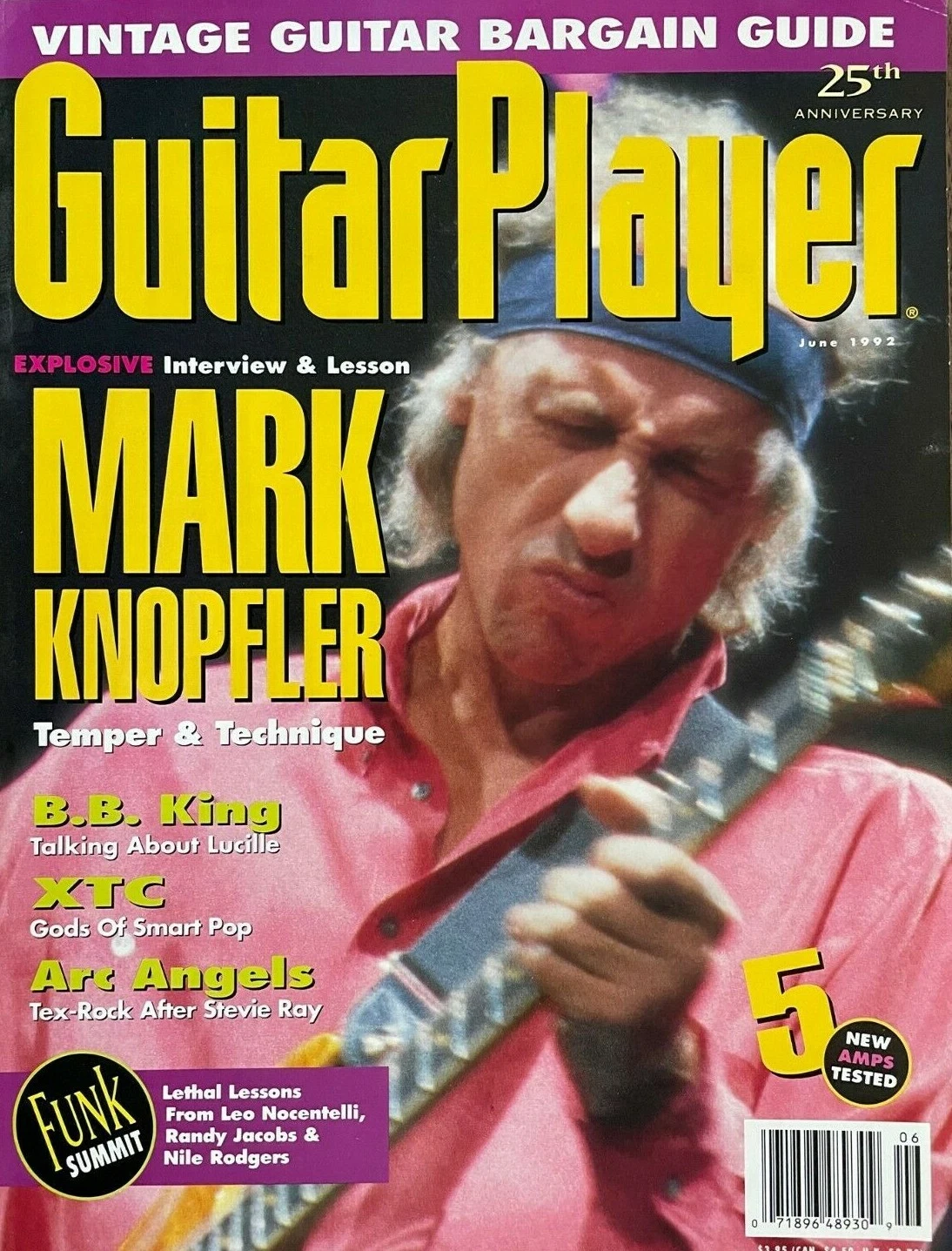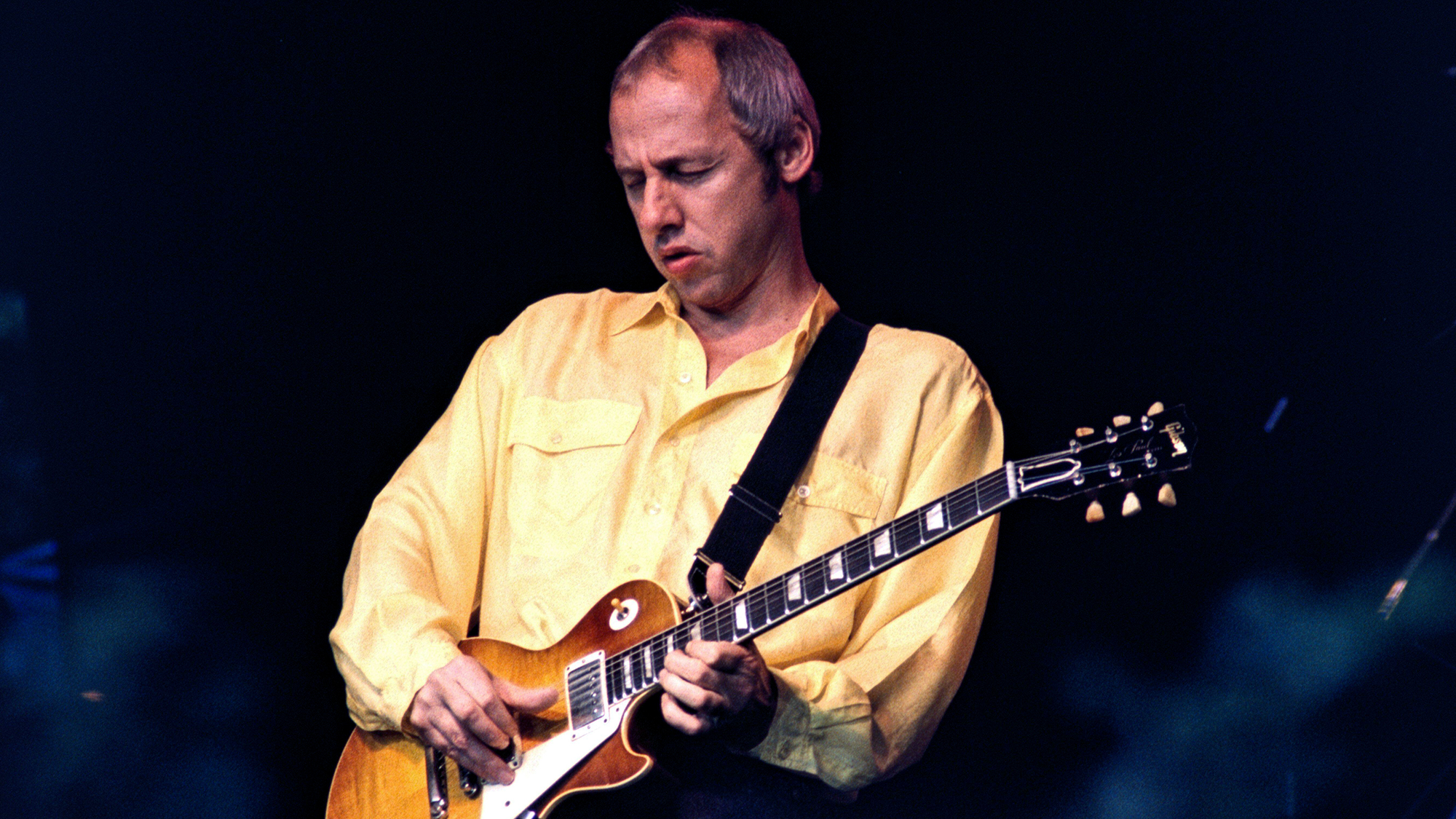“I was sleeping on the floor in somebody’s apartment.” Mark Knopfler on the moment he discovered the virtues of fingerpicking — and the pedal that’s essential to his guitar rig
The guitarist elaborated on his discovery, saying, “Playing with your fingers has something to do with immediacy and soul”

You can probably count the number of electric guitar players who don’t use a pick on your fingers and toes. A quick sampling includes Jeff Beck, Lindsey Buckingham, Ritchie Kotzen and Robbie Krieger in the rock world; blues slide players include Albert King, Albert Collins, Bonnie Raitt and Derek Trucks; and jazz giants who go plectrum-less have included Wes Montgomery and Joe Pass.
And then there’s Mark Knopfler. Few electric guitarists in Guitar Player’s history have spoken about their discovery of fingerstyle to the degree Knopfler has. In 2023, the last time we spoke with the former Dire Straits guitarist, he told us he had finally ditched the pick entirely due to “lack of use, plus three bouts of COVID.”
“I just kept losing them and would be fingerpicking more — not necessarily fingerpicking better, just more,” he added. “And it proved to be just a bit more comfortable for me.”
But where did it all begin for him? It turns out he told us that story 30-some years ago, when he dug deep in his history with fingerstyle for a June 1992 cover feature.
As he recalled, the moment he discovered “the Knopfler sound” occurred entirely by chance.
“I was sleeping on the floor in somebody’s apartment. They had a cheap imitation of a Gibson Dove acoustic with unbelievably light strings. It was like playing an electric guitar, but there was a little bit of sound to it,” he explained.

Due to the late hour, he had to play quietly. “You couldn’t really strum or bash it, so I had to fingerpick.
All the latest guitar news, interviews, lessons, reviews, deals and more, direct to your inbox!
“As I was flying around this guitar, I realized I was doing things with my fingers that I could do with a pick, and also some other things that I wouldn’t be able to do with a pick.”
The moment resonated with him in particular because it gave him an instant connection between his intentions and his expression on the guitar.
“Playing with your fingers has something to do with immediacy and soul,” he said. “You’re absolutely in touch with what’s going on. And that can lead to other things too.”
In Knopfler’s case, “other things” includes playing fingerstyle with an electric guitar, which is where he’s made the biggest impact.
But there’s another element to Knopfler’s sound that can’t be overlooked. As he told us, “On the electric, I developed the sound a bit further with a volume pedal. Just a simple Ernie Ball pedal. It gives you more of a speaking voice, something that approximates a steel guitar.
“I always wanted that. I can’t sing, so the guitar becomes a voice in many ways. You’re not looking at Bonnie Raitt here.”
Which helps to underscore something intrinsic to Knopfler’s style: He’s as apt to use a sharp attack as he is to quickly fade in a note like a violinist gradually applying pressure to their bow. It's a hallmark of his style and one that guitarists have taken note of ever since the release of Dire Straits' breakthrough single, “Sultans of Swing.”
“That’s more like a voice coming in, isn’t it?” Knopfler quipped, before adding, “But sometimes I’ll make a meal of the attack: With my thumb and fingers I’ll do a little flurry.
“I’m just as interested in attack as lack of attack.”
How he creates that flurry is itself a point of interest, something that he sees apparent both in boogie and flamenco.
“It’s the same as the boogie rhythm. In other words, the fingers do a pickup before the downbeat. The downbeat is with the thumb. This applies to rhythm playing, which is my greatest joy, as well as solo playing. You anticipate the downbeat with a pickup, a brush from either one or two fingers.
“A flamenco guitarist will swirl the fingers up and then — wham! — hit the downbeat. It’s a cheapened, mediocre version of that.”
Knopfler said he has tried thumb- and fingerpicks, with no success.
“I dispensed with thumbpicks and fingerpicks a long time ago. A fingerpick doesn’t give you a down blast if you want one. And the thumbpick separates your thumb from your fingers.”

As for fingerstyle, it’s not without its drawbacks.
“Because I’m playing with my fingers, I need good amplification,” Knopfler explains. “The best amplifiers are picks. As soon as you lose the pick, you lose a lot of level. It changes the tone and, in terms of genre, it changes the legitimacy of what you do.
“So if I’m playing a straight blues or something with my fingers on an electric guitar, I have to think slightly differently.
“But I could never keep picks anyway, so I just play the way I do and dial up the right sound on the tube amp.”
The best amplifiers are picks. As soon as you lose the pick, you lose a lot of level. It changes the tone and the legitimacy of what you do.”
— Mark Knopfler
As for Knopfler’s moment of fingerstyle enlightenment, take note of when it occurred: at night, when he was tired. It turns out some important discoveries have come to him in those moments between lucidity and sleep. It turns out he’s been learning that way forever.
“Ever since the beginning,” he says. “I’ll fall asleep playing and my fingers will just be flying about.”
He offered an example of an epiphany that came to him at the bewitching hour.
“Falling asleep on holiday on this last break,” he told us back in 1992, “I discovered that the [third and fourth finger] anchor I use actually mutes the acoustic.”
The knowledge made him change his technique.
“I’m playing more fingers off. Anchors aweigh! With an acoustic it sounds so much better.
“This is elementary stuff,” he acknowledged, “but it took me 20 years to find out.”
Christopher Scapelliti is editor-in-chief of GuitarPlayer.com and the former editor of Guitar Player, the world’s longest-running guitar magazine, founded in 1967. In his extensive career, he has authored in-depth interviews with such guitarists as Pete Townshend, Slash, Billy Corgan, Jack White, Elvis Costello and Todd Rundgren, and audio professionals including Beatles engineers Geoff Emerick and Ken Scott. He is the co-author of Guitar Aficionado: The Collections: The Most Famous, Rare, and Valuable Guitars in the World, a founding editor of Guitar Aficionado magazine, and a former editor with Guitar World, Guitar for the Practicing Musician and Maximum Guitar. Apart from guitars, he maintains a collection of more than 30 vintage analog synthesizers.

